High datarate wireless neural recording for non-human primates
 This work demonstrates the reverberant cavity effect via measurement of the channel transfer function inside a metal cage used for non-human primate (NHP) research in the 902-928 MHz ultra-high frequency (UHF) industrial, scientific, and medical (ISM) band. A reduced-size ceramic patch antenna developed for the Neurochip neural recording and stimulation device was affixed to a saline tissue proxy, while a commercial air-dielectric patch antenna was affixed to the ceiling of the cage. A measured 3 dB channel bandwidth greater than 6.5 MHz with a port-to-port insertion loss between 14-37 dB was achieved at 126 surveyed locations within the cage volume. A 6.25 Mbps backscatter data uplink using a differential quadrature phase shift keying (DQPSK) constellation was successfully validated inside the cage, with effectively 0 % packet error rate for all but two of the surveyed locations. Simulation and experimental results show good agreement and reveal that wideband backscatter communication systems can perform well despite the significant multipath inside the reverberant cage environment. I worked on the deveopment of the comms shield, the backscatter communications, the software defined radio receiver as well as the measurement campaign for neural data from a non-human primate.
Related media:
This work demonstrates the reverberant cavity effect via measurement of the channel transfer function inside a metal cage used for non-human primate (NHP) research in the 902-928 MHz ultra-high frequency (UHF) industrial, scientific, and medical (ISM) band. A reduced-size ceramic patch antenna developed for the Neurochip neural recording and stimulation device was affixed to a saline tissue proxy, while a commercial air-dielectric patch antenna was affixed to the ceiling of the cage. A measured 3 dB channel bandwidth greater than 6.5 MHz with a port-to-port insertion loss between 14-37 dB was achieved at 126 surveyed locations within the cage volume. A 6.25 Mbps backscatter data uplink using a differential quadrature phase shift keying (DQPSK) constellation was successfully validated inside the cage, with effectively 0 % packet error rate for all but two of the surveyed locations. Simulation and experimental results show good agreement and reveal that wideband backscatter communication systems can perform well despite the significant multipath inside the reverberant cage environment. I worked on the deveopment of the comms shield, the backscatter communications, the software defined radio receiver as well as the measurement campaign for neural data from a non-human primate.
Related media:

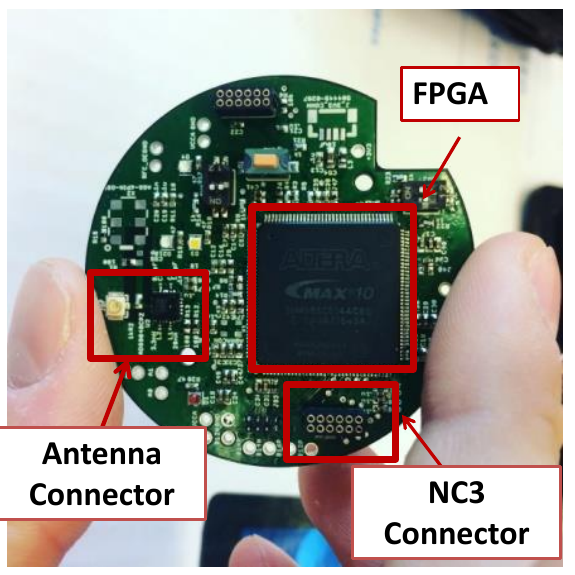


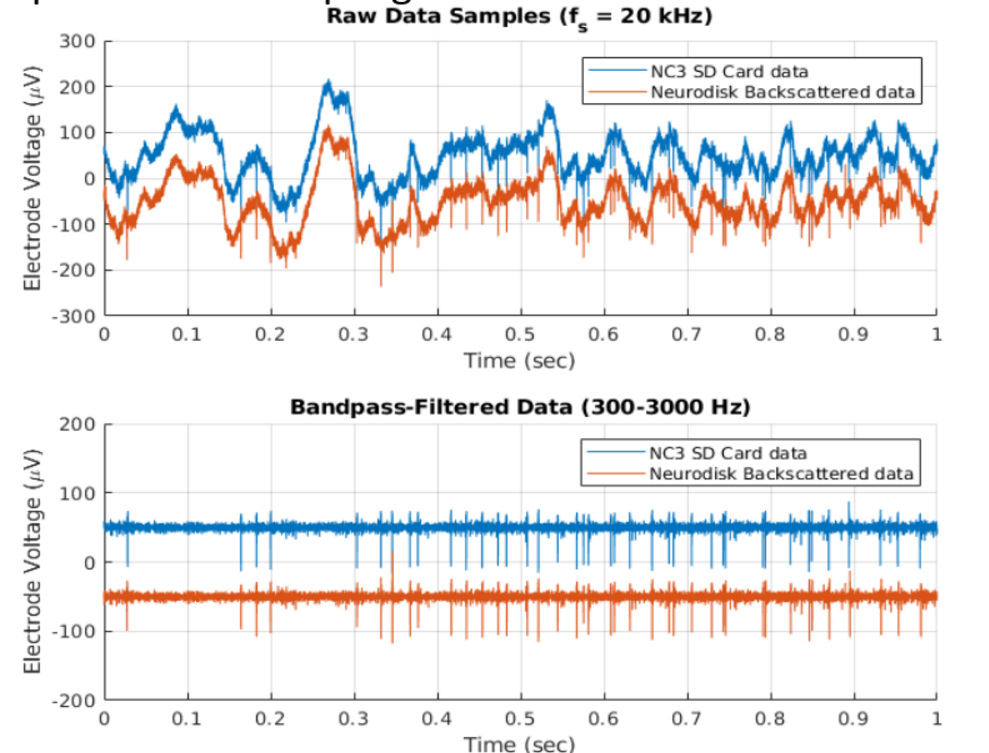
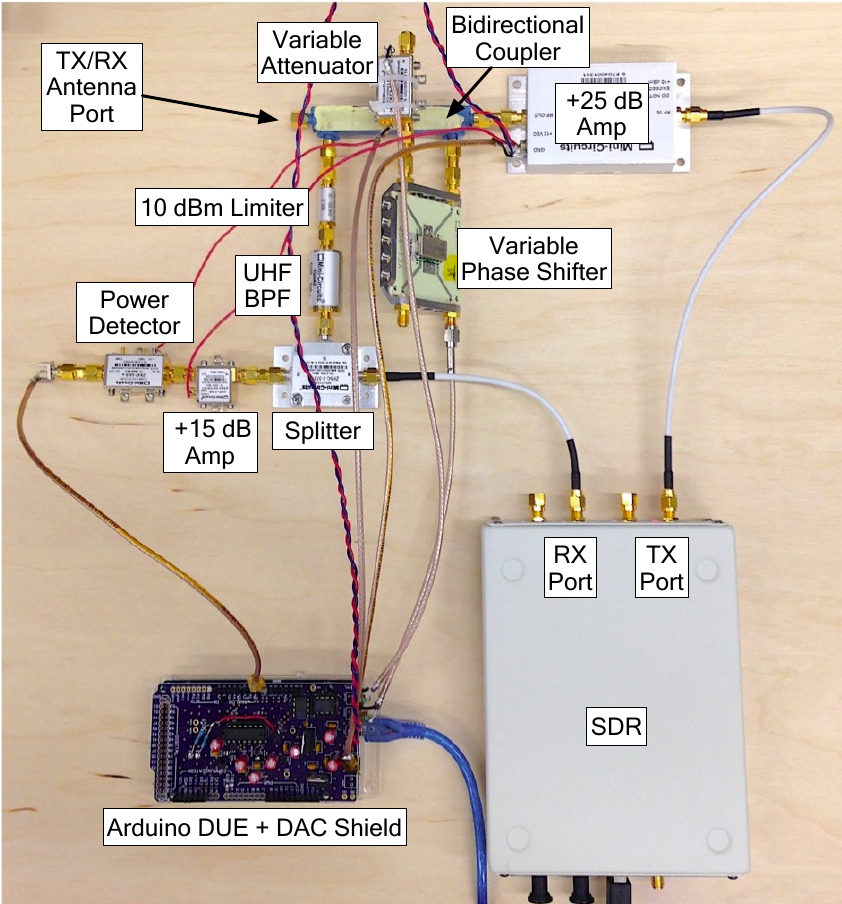
Fully passive and high datarate dual-band ECoG/EMG implantable system
 I developed a dual-band implantable device that incorporates HF wireless power delivery and UHF backscatter communication. A testbed is described including a custom implant device as well as an external system based around the USRP B210 software defined radio platform. The implant integrates a binary phase shift keying backscatter uplink rate of 5 Mb/s, with an HF wireless power transfer link delivering 1.33 mW at an efficiency of 17%. The implant is 25 mm in diameter and 2.8 mm thick, including the printed circuit substrate, dual-band antenna, all circuitry, and biocompatible silicone encapsulation. It supports up to ten neural and four electromyogram (EMG) channels with a sampling rate of 26.10 kHz for the neural channels and 1.628 kHz for the EMG channels. The communication link is shown to have 0% packet error rate at an implant depth of up to 2.5 cm. I worked on the HF WPT, the backscatter BPSK receiver and self-jammer canceller, the implant integration, the testbed and conducted all the measurements. The corresponding published paper received the best paper nomination and the best poster award at the IEEE RFID conference in 2017. I am also working on the second version of this implant that will incorporate an ARM Cortex M0+ and and Intan RHS2116 that achieved datarates up to 12 Mbps (shown in the last picture).
Related media:
I developed a dual-band implantable device that incorporates HF wireless power delivery and UHF backscatter communication. A testbed is described including a custom implant device as well as an external system based around the USRP B210 software defined radio platform. The implant integrates a binary phase shift keying backscatter uplink rate of 5 Mb/s, with an HF wireless power transfer link delivering 1.33 mW at an efficiency of 17%. The implant is 25 mm in diameter and 2.8 mm thick, including the printed circuit substrate, dual-band antenna, all circuitry, and biocompatible silicone encapsulation. It supports up to ten neural and four electromyogram (EMG) channels with a sampling rate of 26.10 kHz for the neural channels and 1.628 kHz for the EMG channels. The communication link is shown to have 0% packet error rate at an implant depth of up to 2.5 cm. I worked on the HF WPT, the backscatter BPSK receiver and self-jammer canceller, the implant integration, the testbed and conducted all the measurements. The corresponding published paper received the best paper nomination and the best poster award at the IEEE RFID conference in 2017. I am also working on the second version of this implant that will incorporate an ARM Cortex M0+ and and Intan RHS2116 that achieved datarates up to 12 Mbps (shown in the last picture).
Related media:
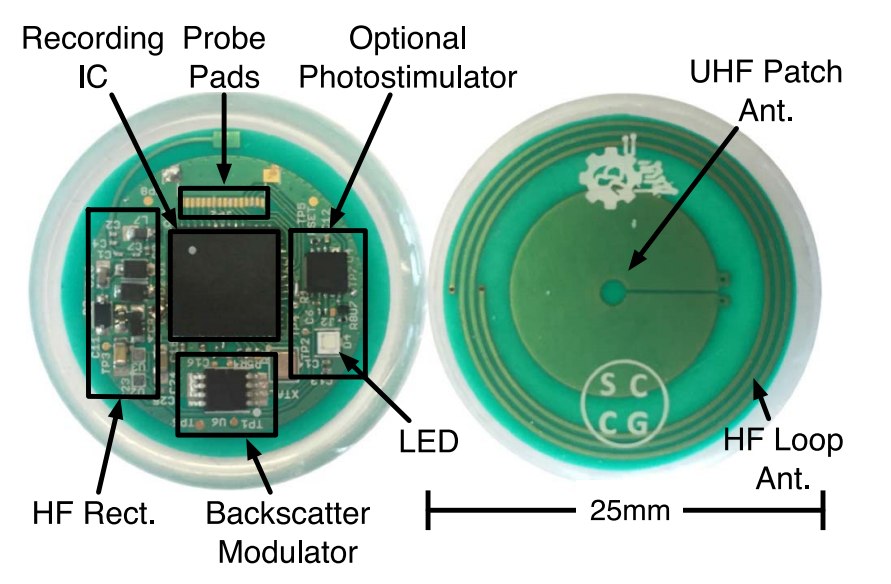

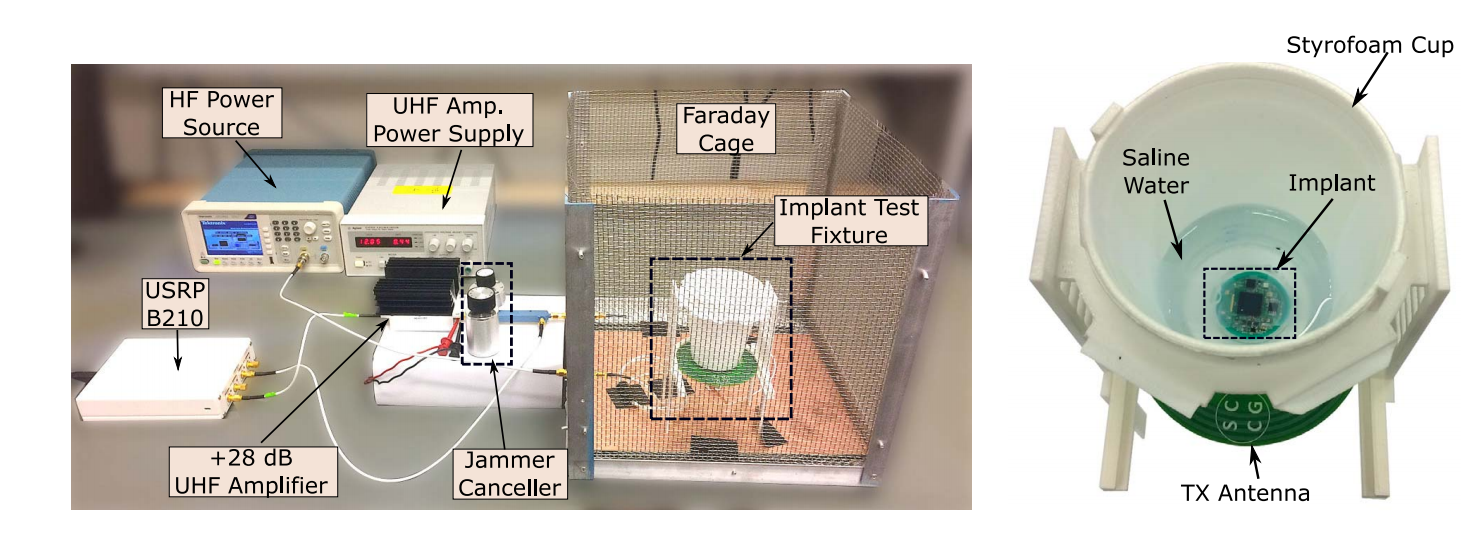


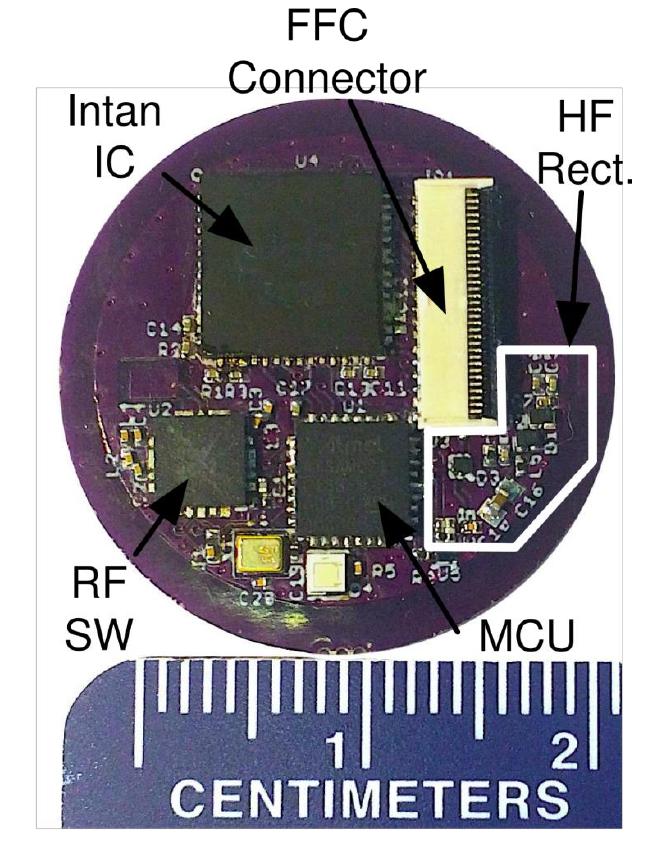
Automated continuous bladder irrigation
 Every year, more than 150,000 people who have urological surgery develop a condition called hematuria—the presence of blood in the urine. Blood forms clots, and if unmonitored these can lead to urinary retention, and even perforate the bladder, necessitating further surgical interventions. Treating hematuria, however, is time-intensive, requiring a nurse to check on a patient every fifteen minutes for up to three days. Our team at the University of Washington has developed a device that automates the treatment of hematuria. This both frees up nurses and reduces the time a patient needs to stay in a hospital. The device could save $285 million per year on healthcare in the United States alone. I worked on the development of the embedded electronics systems including the microcontroller interface, the optimized and robust algorithms, RGB color sensor development and calibration, and an automated clamp mechanism.
Related media:
Every year, more than 150,000 people who have urological surgery develop a condition called hematuria—the presence of blood in the urine. Blood forms clots, and if unmonitored these can lead to urinary retention, and even perforate the bladder, necessitating further surgical interventions. Treating hematuria, however, is time-intensive, requiring a nurse to check on a patient every fifteen minutes for up to three days. Our team at the University of Washington has developed a device that automates the treatment of hematuria. This both frees up nurses and reduces the time a patient needs to stay in a hospital. The device could save $285 million per year on healthcare in the United States alone. I worked on the development of the embedded electronics systems including the microcontroller interface, the optimized and robust algorithms, RGB color sensor development and calibration, and an automated clamp mechanism.
Related media:



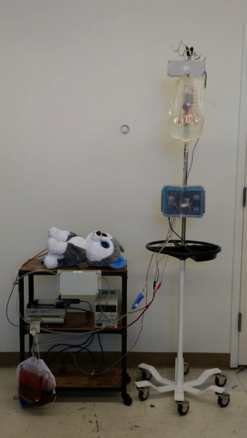

Wireless Admitance Monitoring System (WiAMS)
 The WiAMS is a wireless system for estimating the impedance magnitude (|Z|) of a PZT device that is utilized for concrete integrity monitoring. Particularly, WiAMS offers extensive features such as remote control, high processing power, wireless data upload to SQL database, email notifications, sched- uled, iterative |Z| estimations and frequency span from 5 kHz to 300 kHz resolution down to 1 Hz. A comprehensive report of the system can be found here. The project was developed together with George Pentes and John Agadakos.
Related media:
The WiAMS is a wireless system for estimating the impedance magnitude (|Z|) of a PZT device that is utilized for concrete integrity monitoring. Particularly, WiAMS offers extensive features such as remote control, high processing power, wireless data upload to SQL database, email notifications, sched- uled, iterative |Z| estimations and frequency span from 5 kHz to 300 kHz resolution down to 1 Hz. A comprehensive report of the system can be found here. The project was developed together with George Pentes and John Agadakos.
Related media:
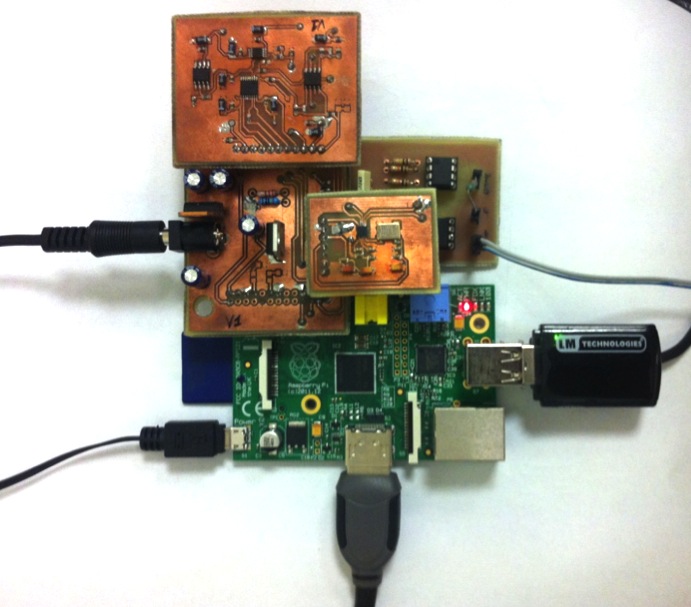


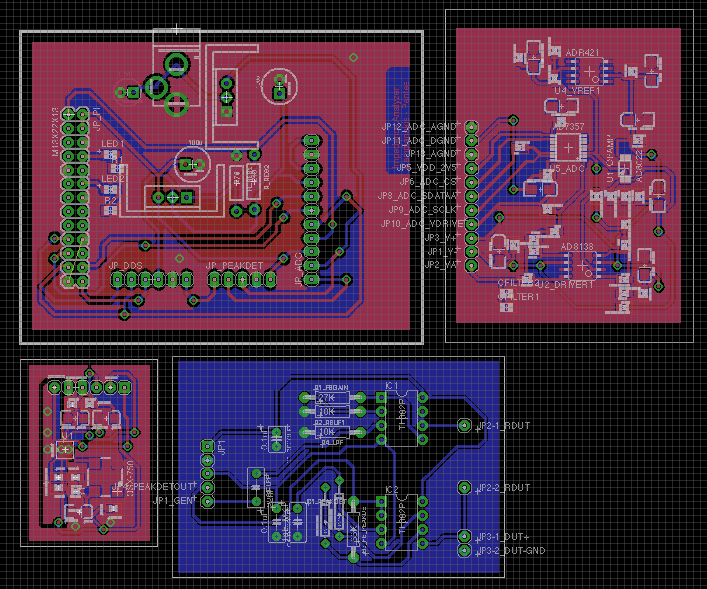

Novel, Ultra Low Power, Low Cost, Scalable Backscatter Sensor Network for Measuring Relative Humidity (MSc Thesis)
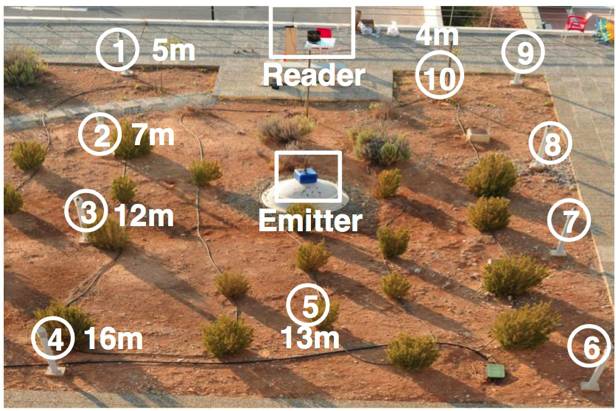 My master thesis regards the development of an ultra low-cost, ultra low-power and scalable sensor network, operating with bi-static backscatter principles. A wireless sensor tag that utilizes modulation via reflection has been developed. It achieves communication via the backscattering of a carrier emitted by an Silabs Si1000 radio in a tag-reader range of over 100m while consuming 0.5mW for transmission. The tag modulates relative environmental humidity (RH) with an 1.9%RH RMS error. Moreover, each tag implements a scalable frequency division multiple access scheme that allows development of large sensor networks. A video demonstration of a point-to-point link that demonstrates the communication range is available here. For the puposes of this work, we developed along with John Kimionis an over-the-air programmable backscatter testbed is developed that utilizes the bootloader developed for my diploma thesis. A video demonstration of the setup is depicted here.
Related media:
My master thesis regards the development of an ultra low-cost, ultra low-power and scalable sensor network, operating with bi-static backscatter principles. A wireless sensor tag that utilizes modulation via reflection has been developed. It achieves communication via the backscattering of a carrier emitted by an Silabs Si1000 radio in a tag-reader range of over 100m while consuming 0.5mW for transmission. The tag modulates relative environmental humidity (RH) with an 1.9%RH RMS error. Moreover, each tag implements a scalable frequency division multiple access scheme that allows development of large sensor networks. A video demonstration of a point-to-point link that demonstrates the communication range is available here. For the puposes of this work, we developed along with John Kimionis an over-the-air programmable backscatter testbed is developed that utilizes the bootloader developed for my diploma thesis. A video demonstration of the setup is depicted here.
Related media:
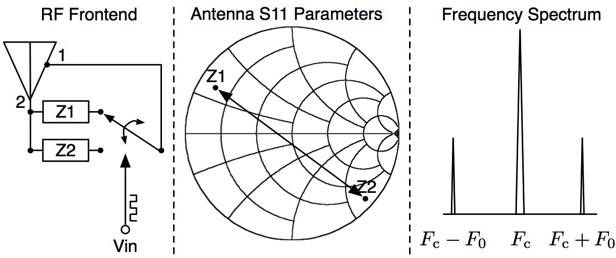
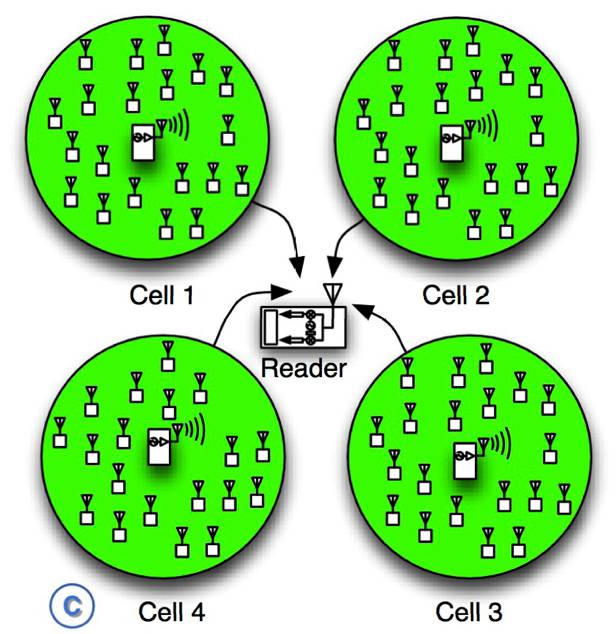



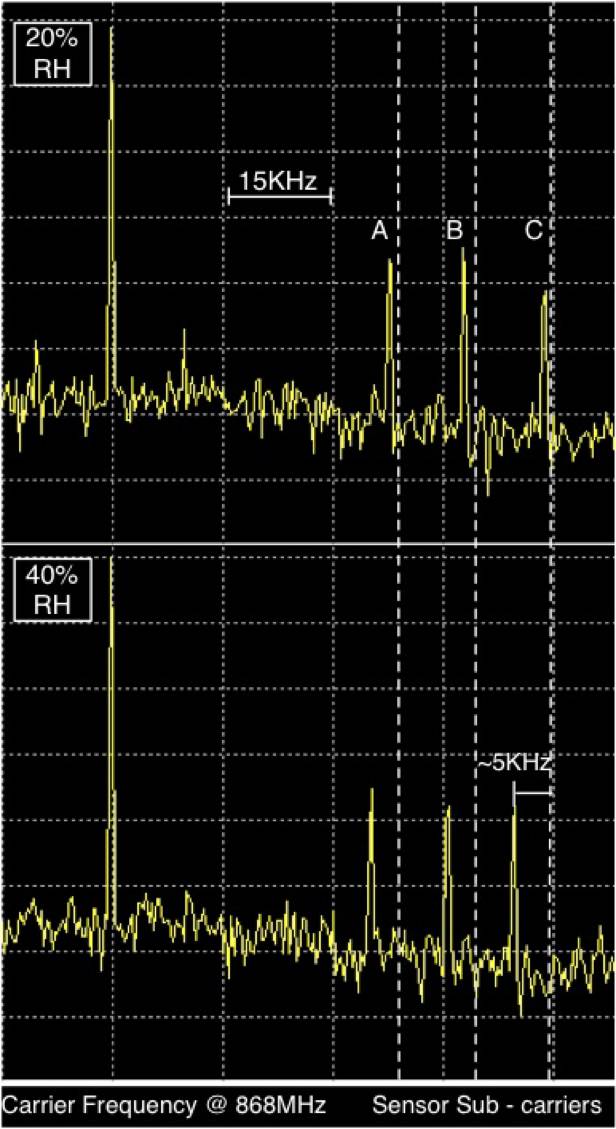

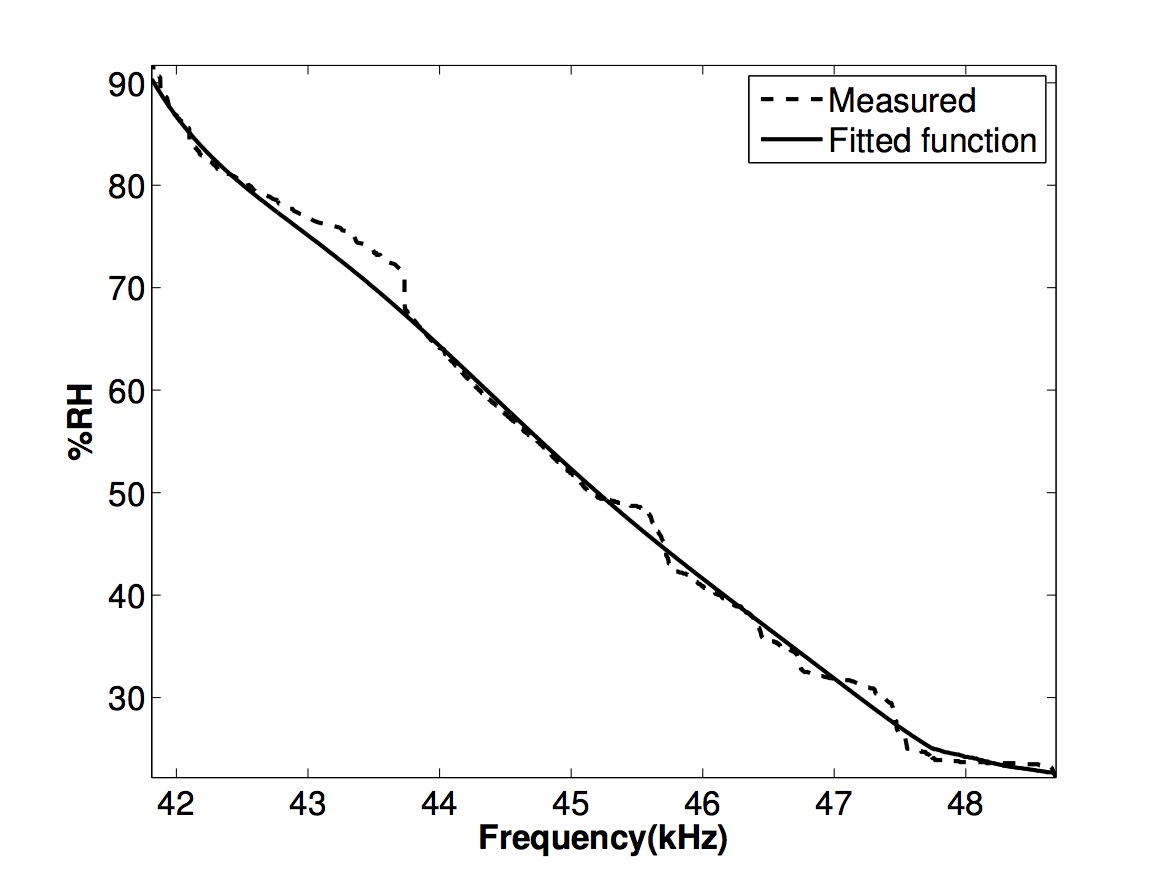
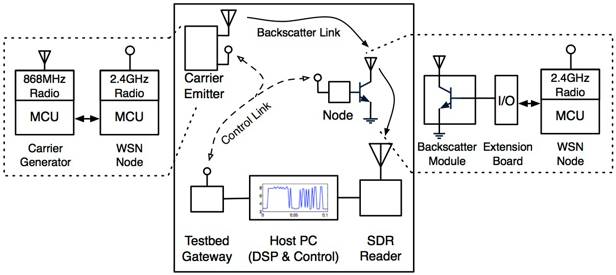
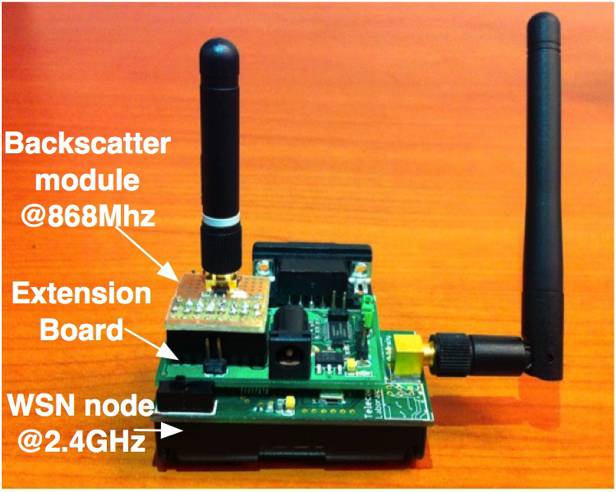

FPGA Implementation of the Algorithm for Efficient Computation of the Binary Vector That Maximizes a Rank-Deficient Quadratic form
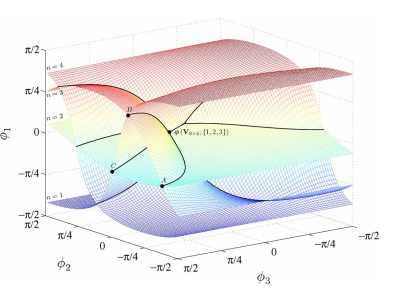 We implemented a part of the algorithm for for efficient computation of the binary vector that maximizes a Rand-Deficient quadratic designed by Prof. George N. Karystinos on Field Programmable Gate Array hardware (FPGA). We managed to get an overall 100 speedup indicating that theoretical promises for real time modules implementing the algorithm are feasible.
We implemented a part of the algorithm for for efficient computation of the binary vector that maximizes a Rand-Deficient quadratic designed by Prof. George N. Karystinos on Field Programmable Gate Array hardware (FPGA). We managed to get an overall 100 speedup indicating that theoretical promises for real time modules implementing the algorithm are feasible.
Real Time Data Acquisition for Novel Magneto-Rheometer System
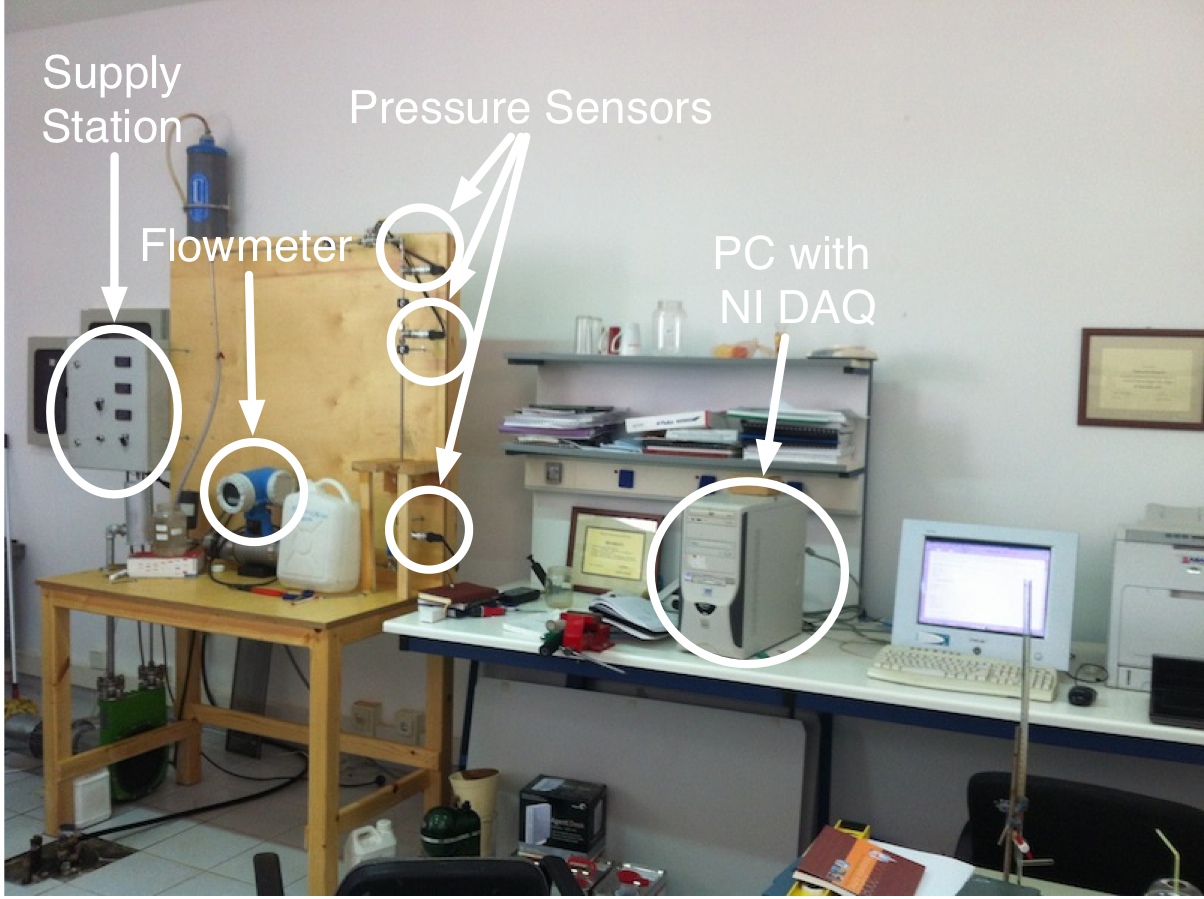 The goal of this project was to create a real time sensor data acquisition system. The system to be monitored is flexible and innovative magneto-rheometer has been designed and fabricated in the Mineral Resources Engineering Department (MRED) laboratory. It consists of a vertical pipe running across a magnetic field created by an electromagnet. The system is equipped with a coriolis flowmeter and three pressure transmitters. The flow is provided by a peristaltic pump. The pipes which carry the fluid are non-magnetic. The parameters which are monitored are flow rate, density, temperature, pressure, pressure drop and magnetic flux. For the analog to digital conversion of the monitored parameters, a data acquisiton card by National Instruments was utilized and a software script in Matlab was written in order to translate and present the data to the user.
The goal of this project was to create a real time sensor data acquisition system. The system to be monitored is flexible and innovative magneto-rheometer has been designed and fabricated in the Mineral Resources Engineering Department (MRED) laboratory. It consists of a vertical pipe running across a magnetic field created by an electromagnet. The system is equipped with a coriolis flowmeter and three pressure transmitters. The flow is provided by a peristaltic pump. The pipes which carry the fluid are non-magnetic. The parameters which are monitored are flow rate, density, temperature, pressure, pressure drop and magnetic flux. For the analog to digital conversion of the monitored parameters, a data acquisiton card by National Instruments was utilized and a software script in Matlab was written in order to translate and present the data to the user.
Design and Implementation of an Indoor Audio Localization System
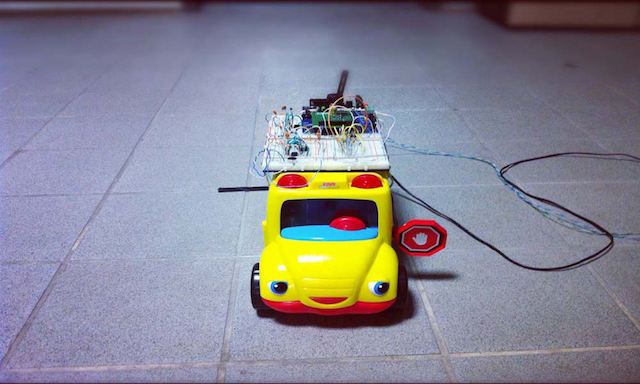 The Indoor Audio GPS is a simple localization testbed using acoustic waves and the iCubes Wireless Sensor Network platform. The goal is to localize a moving vehicle indoors with low-cost communication hardware. The system consists of four parts: 4 ceiling (anchor) nodes, the vehicle to be localized, a coordinator node and a PC. The vehicle is a toy-car equipped with a microphone, an acoustic bandpass filter and a C8051f320 Development Kit, interfaced to a CC2500 radio module. Location is estimated with the use of convex optimization algorithms running on a PC. The provided testbed is designed with low-cost, custom audio ranging electronics, RF communication and easy-to-use, Matlab interface that allows quick experimentation with various localization algorithms.
Related media:
The Indoor Audio GPS is a simple localization testbed using acoustic waves and the iCubes Wireless Sensor Network platform. The goal is to localize a moving vehicle indoors with low-cost communication hardware. The system consists of four parts: 4 ceiling (anchor) nodes, the vehicle to be localized, a coordinator node and a PC. The vehicle is a toy-car equipped with a microphone, an acoustic bandpass filter and a C8051f320 Development Kit, interfaced to a CC2500 radio module. Location is estimated with the use of convex optimization algorithms running on a PC. The provided testbed is designed with low-cost, custom audio ranging electronics, RF communication and easy-to-use, Matlab interface that allows quick experimentation with various localization algorithms.
Related media:




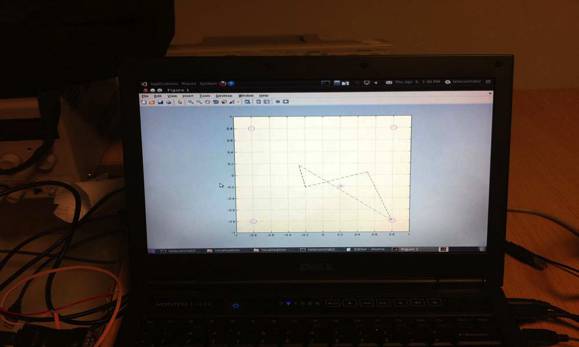 Project Website
Project Website
The i-Cubes project: Remotely Programmable, Low-power, Low-cost WSN from Scratch
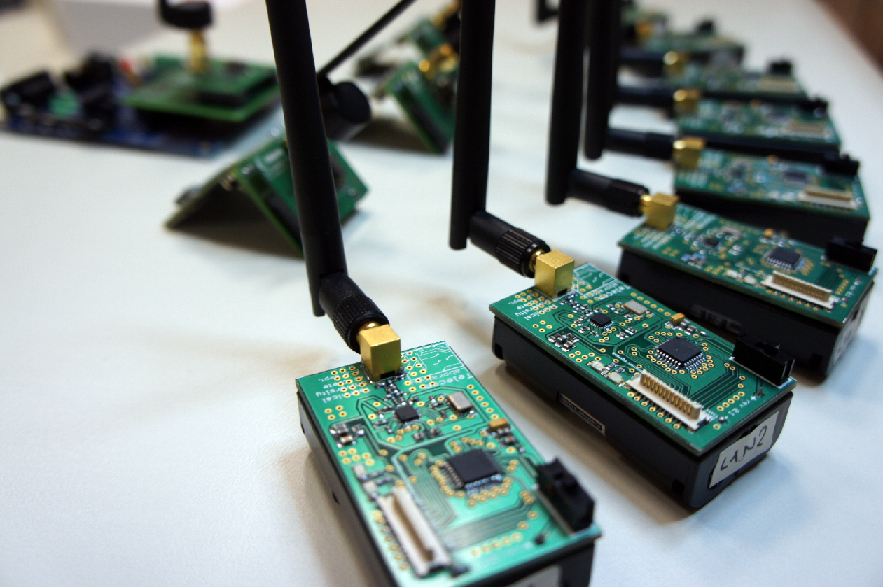 We designed and implemented a wireless sensor network (WSN) from first principles, i.e. without the use of commercial WSN platforms. Specifically, a modular multi-hop WSN has been built for temperature and soil wetness measurements, towards precision agriculture applications. The i-Cubes are radio communicating modules for low-cost sensing and information relaying. Moreover we have deployed a methodology for synchronized access with highly unsynchronized nodes, ensuring connectivity and reduced energy consumption. This work provides a concrete demonstration example of a simple precision agriculture application and could potentially assist students, researchers and practitioners to develop their own customized platforms, without dependence on commercial WSN platforms. Notice that the radio modules were thoroughly constructed in the telecommunications laboratory of the department, including the design of a customized printed circuit board.
Project Website
We designed and implemented a wireless sensor network (WSN) from first principles, i.e. without the use of commercial WSN platforms. Specifically, a modular multi-hop WSN has been built for temperature and soil wetness measurements, towards precision agriculture applications. The i-Cubes are radio communicating modules for low-cost sensing and information relaying. Moreover we have deployed a methodology for synchronized access with highly unsynchronized nodes, ensuring connectivity and reduced energy consumption. This work provides a concrete demonstration example of a simple precision agriculture application and could potentially assist students, researchers and practitioners to develop their own customized platforms, without dependence on commercial WSN platforms. Notice that the radio modules were thoroughly constructed in the telecommunications laboratory of the department, including the design of a customized printed circuit board.
Project Website
RF Link for the Municipal Water Supply Company of Chania
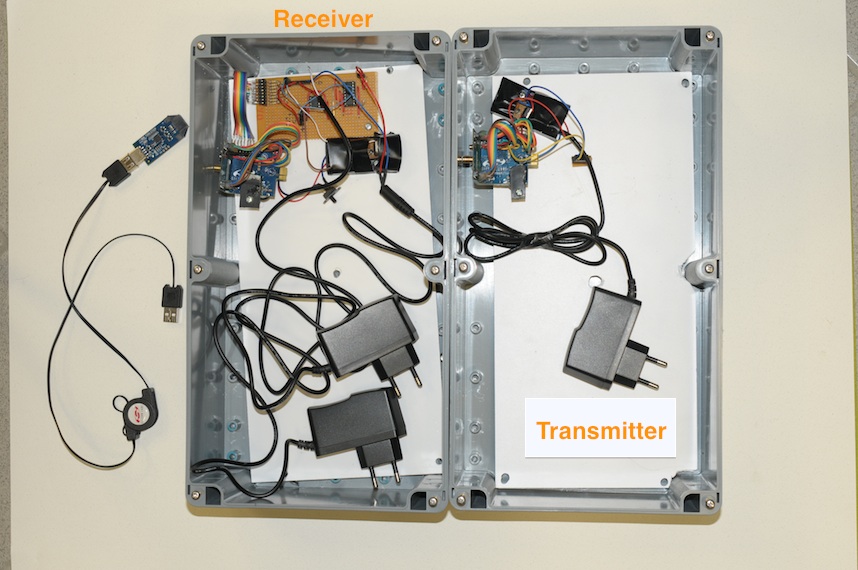 Together with John Kimionis , we implemented a point-to-point RF link for the Municipal Water Supply Company of Chania. Water tank level data from a already-installed sensor had to be transmitted wirelessly to the Company's facilities, as there was no infrastructure for current-loop cables installation. The distance between the two nodes utilized was about 450 meters.
One wireless node served as the transmitter, utilizing on-chip Analog to Digital Converter and simple circuitry to acquire sensor data. The information was transmitted to a second node, which output the sensor's measured value on a digital port. A custom Digital to Analog Converter was built, plus a Voltage Controlled Current Source, to achieve output of 4-20mA current values, in order to ensure compatibility with the Company's PLC units. Protocol-specific functions were implemented, such as alerts of broken link and/or sensor, in the form of 0mA output current.
The nodes along with the respective circuitry were packaged in high quality waterproof IP65 boxes to prevent dust and water from affecting the electronics.
Together with John Kimionis , we implemented a point-to-point RF link for the Municipal Water Supply Company of Chania. Water tank level data from a already-installed sensor had to be transmitted wirelessly to the Company's facilities, as there was no infrastructure for current-loop cables installation. The distance between the two nodes utilized was about 450 meters.
One wireless node served as the transmitter, utilizing on-chip Analog to Digital Converter and simple circuitry to acquire sensor data. The information was transmitted to a second node, which output the sensor's measured value on a digital port. A custom Digital to Analog Converter was built, plus a Voltage Controlled Current Source, to achieve output of 4-20mA current values, in order to ensure compatibility with the Company's PLC units. Protocol-specific functions were implemented, such as alerts of broken link and/or sensor, in the form of 0mA output current.
The nodes along with the respective circuitry were packaged in high quality waterproof IP65 boxes to prevent dust and water from affecting the electronics.
Custom Over the Air Programmable Embedded Radios (Diploma Thesis)
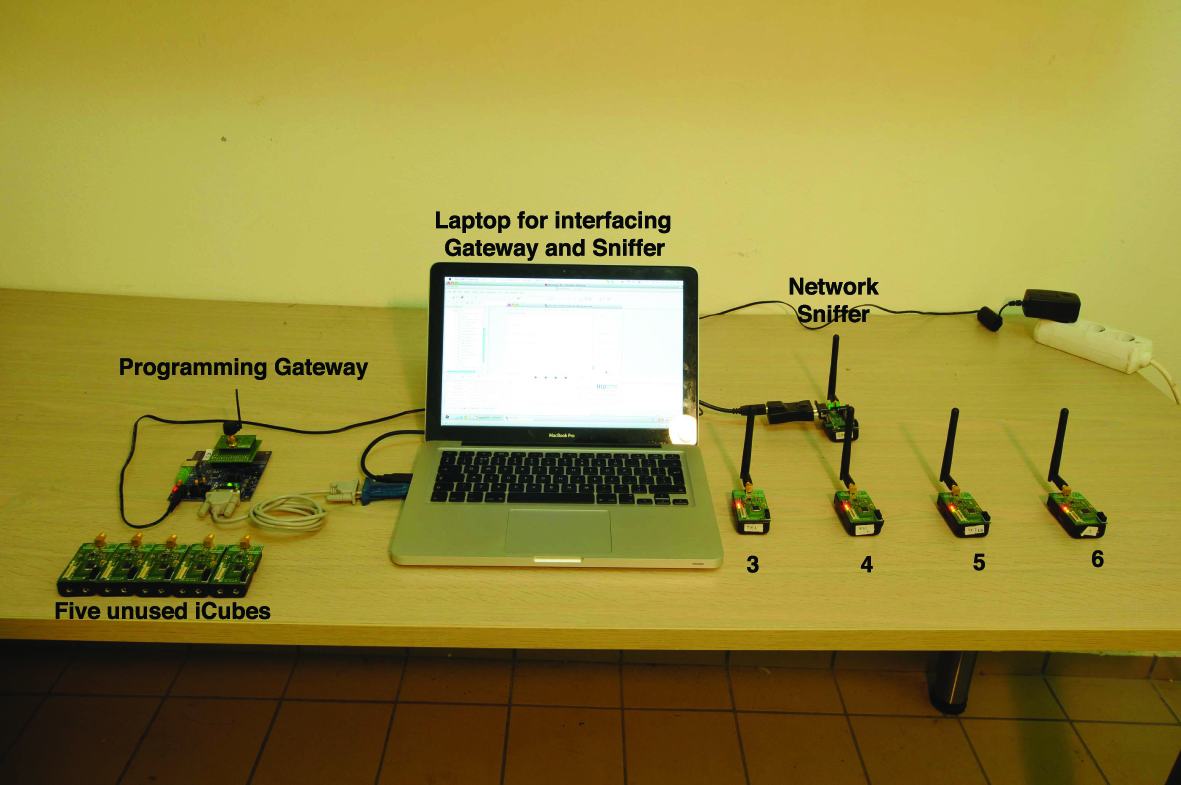 During my diploma thesis, I developed hardware, middleware and software towards a custom and low-cost remotely programmable radio network testbed. Such testbed is envisioned as a tool for the telecom researcher to develop, deploy and debug radio network projects and applications. To the best of the my knowledge, this is the first attempt towards a radio network testbed, designed and built in a Greek university from first principles. Key features of the testbed include: simplicity of use, reliability and remote programmability. Furthermore, each carefully designed wireless transceiver node enables environmental sensing and personal computer interfacing at a relatively low cost (\euro{30} bill of materials for each transceiver assuming relatively small quantities), due to in-house design and fabrication. The proposed testbed consists of various software and hardware components designed to facilitate experimental work for the telecom engineer/researcher. You can find my thesis text
here. as well as a video demonstration of the testbed here.
Related media:
During my diploma thesis, I developed hardware, middleware and software towards a custom and low-cost remotely programmable radio network testbed. Such testbed is envisioned as a tool for the telecom researcher to develop, deploy and debug radio network projects and applications. To the best of the my knowledge, this is the first attempt towards a radio network testbed, designed and built in a Greek university from first principles. Key features of the testbed include: simplicity of use, reliability and remote programmability. Furthermore, each carefully designed wireless transceiver node enables environmental sensing and personal computer interfacing at a relatively low cost (\euro{30} bill of materials for each transceiver assuming relatively small quantities), due to in-house design and fabrication. The proposed testbed consists of various software and hardware components designed to facilitate experimental work for the telecom engineer/researcher. You can find my thesis text
here. as well as a video demonstration of the testbed here.
Related media:
Hephaestus Solar Car
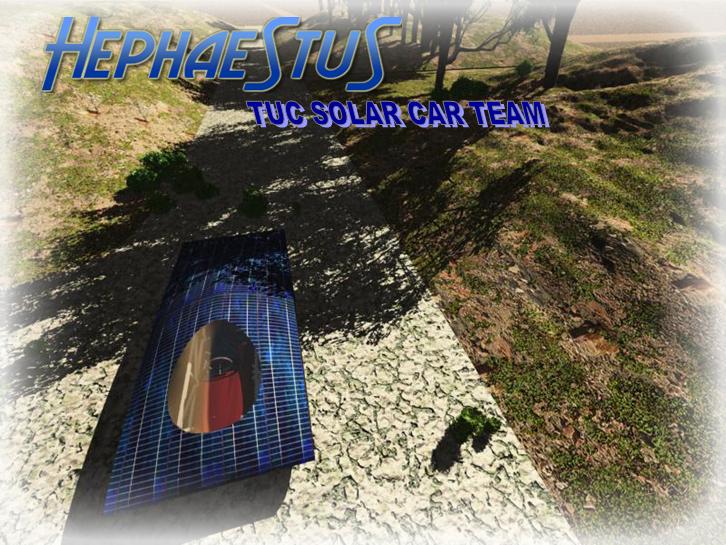 I am a founding member of the solar car team of the Technical University of Crete, namely Hephaestus. Until now we have managed to construct a fully functional ultra low power electric car and the cell on which the solar panels will be set up. Several novel ideas were used for this design. Amongst them, construction of semi-flexible solar panels with the use of ultra light materials such as kevlar fibers and non flexible - high efficiency solarcells by one of our partners, solarcell hellas. I am also the project's site developer and administrator.
Project Website
I am a founding member of the solar car team of the Technical University of Crete, namely Hephaestus. Until now we have managed to construct a fully functional ultra low power electric car and the cell on which the solar panels will be set up. Several novel ideas were used for this design. Amongst them, construction of semi-flexible solar panels with the use of ultra light materials such as kevlar fibers and non flexible - high efficiency solarcells by one of our partners, solarcell hellas. I am also the project's site developer and administrator.
Project Website
Non-Destructive Wireless Concrete Monitoring Using an Innovative Electromechanical Impedance Sensing System
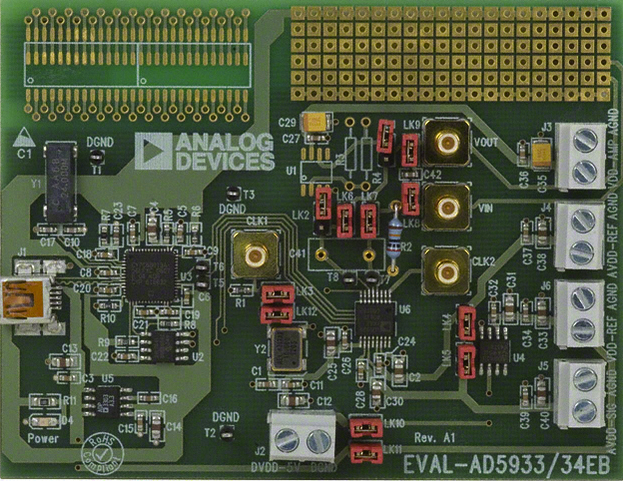 The goal of this project was to create a low cost concrete monitoring system using piezoelectric sensors for research. The method of operation is by measuring the impedance of the sensors while oscillating them in a range of frequencies. I implemented the firmware for the Analog AD5933 firmware in order for the impedance measurements to be taken. Moreover, i implemented a java interface in order for those measurements to be transfered in a remote MySQL database which i also designed. The project was successfully tested under various conditions and it is in operation until now.
The goal of this project was to create a low cost concrete monitoring system using piezoelectric sensors for research. The method of operation is by measuring the impedance of the sensors while oscillating them in a range of frequencies. I implemented the firmware for the Analog AD5933 firmware in order for the impedance measurements to be taken. Moreover, i implemented a java interface in order for those measurements to be transfered in a remote MySQL database which i also designed. The project was successfully tested under various conditions and it is in operation until now.

